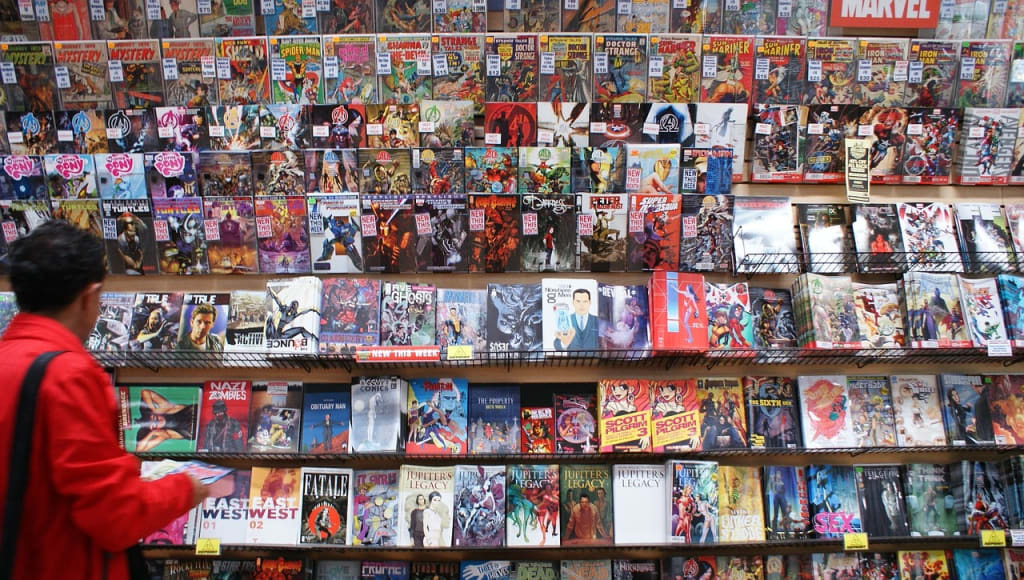Why comic books are better than graphic novels
Comic books and graphic novels are widely popular among both children and adults alike, but they are not the same.

Comic books and graphic novels are widely popular among both children and adults alike, but they are not the same. Comic books are typically shorter and feature action-driven storylines, while graphic novels are typically longer, more detailed, and often contain multi-dimensional characters and complex storylines.
One of the most convincing arguments for why comic books are better than graphic novels is their rich and vibrant artwork. Comic books feature artwork that is dynamic, often three-dimensional, and full of vibrant colors and detailed backgrounds. The artwork gives readers a cinematic experience that is hard to replicate with the artwork in graphic novel books.
Furthermore, comic books tend to be shorter than graphic novels. As such, comic books offer readers the opportunity to read an entire story in one sitting, rather than having to wait for a part two as a reader would with a graphic novel. This is especially appealing to younger readers who may find it difficult to stick with a story that spans multiple books.
Another reason why many people consider comic books better than graphic novels is due to the writing style. Comic books are written in a style that is easy to follow and often contains jokes, puns, and witty dialogue, which appeals to a large audience. Graphic novels, on the other hand, can be quite heavy in terms of writing tone, which means they may not cater to everyone.
In fact, Comic books and graphic novels are two very popular forms of storytelling, and although they may appear similar at first glance, they actually have several distinct features that set them apart. First of all, comic books are shorter and provide more concise information, making them better suited for readers who don't have a lot of time to dedicate to reading. Graphic novels, on the other hand, are typically much lengthier, often with more complicated and intricate stories.
The artwork in comic books is also often more vibrant and visually stimulating than that found in graphic novels. Comic books make use of more primary colors and more dynamic layouts, with sometimes over the top action scenes and larger-than-life characters. In contrast, the artwork in graphic novels is usually less flashy and more realistic, using more monochrome and muted colors to create a more thought-provoking atmosphere.
In terms of content, comic books generally tend to have more action and adventure, with stories that center around superheroes saving the day and swift justice. Graphic novels, on the other hand, are often more introspective and thoughtful, delving into themes of loss, power, and identity in a more psychological way.
Moreover, comic books are generally shorter, with issues being released periodically, and the storyline developing in a serialized fashion. In contrast, graphic novels are self-contained narratives that span several hundred pages, which allows for a more in-depth exploration of the characters, themes, and plot. This difference in length and writing style allows for a different level of storytelling between the two.
Secondly, comic books usually contain superhero themes, while graphic novels can be about anything, ranging from real-life events to artistic fiction. Comic books have been traditionally associated with action and adventure stories, featuring characters with superpowers that save the world from danger. In contrast, graphic novels have greater flexibility in terms of storytelling because they can cover a wide range of subjects, making them more dynamic than comic books.
Thirdly, comic books often rely heavily on dialogue, while graphic novels use a combination of illustrations, dialogue, and narration. This difference lies in their formats. Comic books use panels and speech bubbles that depict a sequence of events, while graphic novels include text boxes that provide a narrative description of the setting and characters' thoughts and feelings.
Fourthly, comic books have been traditionally considered "low-brow" entertainment, while graphic novels are often perceived as "high-brow" literature. However, this is slowly changing, as graphic novels have gained increasing recognition as an art form with the potential for critical and commercial success. The comic book genre still has a firm foothold in popular culture, but graphic novels are emerging as a more sophisticated alternative.
In conclusion, it is clear that comic books offer more comprehensive reading experiences for readers who do not have with graphic novels. What do you think about this?
About the Creator
Daphne Reauben
As a Holland-born individual who was raised in the UK, I have developed a unique appreciation for various cultures in the world. My thirst for knowledge and love of exploring new places have shaped me into a culture addicted individual.






Comments
There are no comments for this story
Be the first to respond and start the conversation.